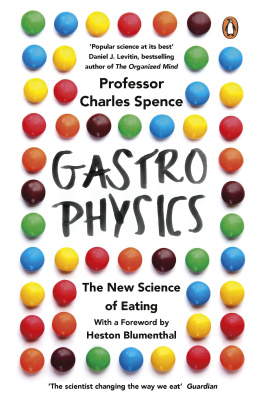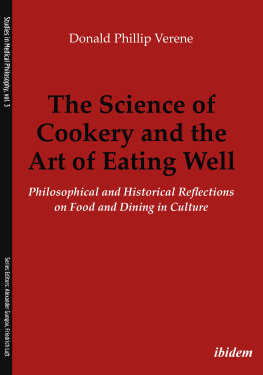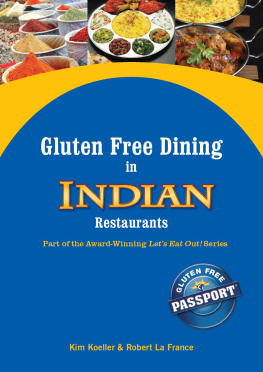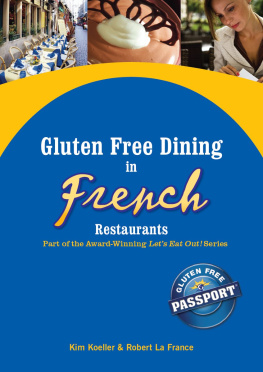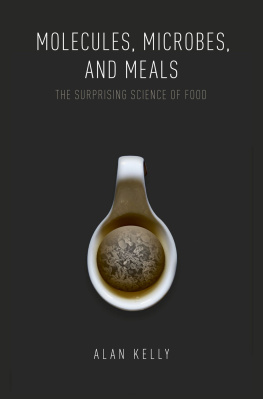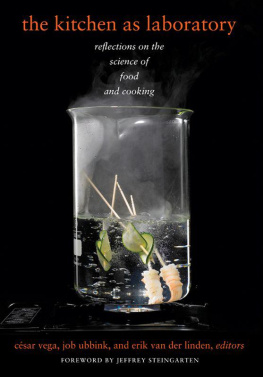Professor Charles Spence
GASTROPHYSICS
The New Science of Eating
Foreword by Heston Blumenthal
VIKING
UK | USA | Canada | Ireland | Australia
India | New Zealand | South Africa
Viking is part of the Penguin Random House group of companies whose addresses can be found at global.penguinrandomhouse.com.
First published 2017
Copyright Charles Spence, 2017
Foreword copyright Heston Blumenthal, 2017
The moral right of the author has been asserted
Cover photography by Neil Mockford
ISBN: 978-0-241-97773-6
To Norah Spence, who knew implicitly the value of a good education without ever having had the opportunity to have one.
And Barbara Spence, who had to read more about the legendary F. T. than any loving wife should ever have to.
Acknowledgements
I would never have ended up in the world of gastrophysics if it hadnt been for the enduring support and mentorship of Prof. Francis McGlone then at Unilever Research, for which I will always remain grateful. As will become clear from the main text, though, it was really the introduction to Heston Blumenthal by Tony Blake of Firmenich that led to my growing interest in gastronomy, rather than food science! In recent years, I owe an especial debt of gratitude to Rupert Ponsonby (R&R), Christophe Cauvy (then of JWT), and Steve Keller (iV Audio Branding) for having believed in the multisensory approach to gastrophysics and all things fun. To Prof. Barry Smith, for helping make the Baz n Chaz wine roadshow so enjoyable. Long may it continue! It has, though, really been the enthusiastic support and collaboration of the next generation of young chefs, including Jozef Youssef, of Kitchen Theory, and Charles Michel, Crossmodalist extraordinaire, that has made the latest gastrophysics research such fun to do. You will read about a number of their dishes and designs in the pages that follow.
I would also like to thank the many chefs and culinary schools for their support, and opening up their kitchens and restaurants to the Mad Professor: I have been lucky enough to conduct gastrophysics research over the last fifteen years together with a number of world-leading chefs including Heston Blumenthal and all the team at The Fat Duck Research Kitchen and restaurant; Chef Sriram Aylur, Quilon, London; Chef Jesse Dunford Woods, Parlour, London; Ben Reade, Nordic Food Lab; Dominique Persoone, The Chocolate Line; Chef Albert Landgraf from Epice, So Paolo; Chef Xavier Gamez, of Xavier260, Porto Allegre, Brazil; Chef Andoni and Dani Lasa from Mugaritz, San Sebastin; Chef Joel Braham, of The Good Egg, London; Chef Debs Paquette, of Etch, Nashville; and not forgetting Chef Paul Fraemohs, of Somerville College, Oxford. I have also been lucky enough to conduct research together with Ferran Adris Alica Foundation in Spain, The Paul Bocuse Cookery School, Lyon, France, and Westminster Kingsway College, London. I would also like to thank Jelly & Gin, Blanch & Shock, Caroline Hobkinson, Sam Bompas, and all the students, past and present, who have done most of the research here at the Crossmodal Research Laboratory.
Finally, I would like to thank Tony Conigliaro from 69 Colbrooke Row, London, Ryan Chetiyawardana, aka Mr Lyan, Neil Perry (of Rockpool, Sydney), and Maxwell Colonna-Dashwood, of Colonna & Smalls, Bath. All masters of their art. And, finally, Fergus Henderson, for the memorable evening onstage at the Cheltenham Science Festival back in 2007 (along with a bucket of tripe oh so gallantly displayed by my vegan then graduate student, Maya Shankar).
Foreword
There was a time when apart from the late, great Nicholas Kurti scientists didnt consider the science of food a serious or worthwhile subject for study. Id talk with them, offering up theories based on what Id observed and carefully tested in The Fat Duck kitchen, and get an indulgent smile that seemed to say, You stick to cooking and let us get on with the rest. Admittedly, chefs were no better, insisting that cooking had little to do with science, as though the eggs they were busy scrambling werent in fact undergoing the technical process of coagulation.
Charles, though, wasnt like this. One of his strengths is that he has a curiosity that crosses disciplines and, for all his scientific rigour, isnt confined to a narrow academic viewpoint. Upon meeting him, I discovered that many of the ideas I was exploring in my kitchen, he was also exploring in his lab. And so, as youll see in this book, he and I began doing research together on how we react to the food we see, hear, smell, touch, and put in our mouths. We eat with our eyes, ears, nose, memory, imagination and our gut. Every human being has a relationship with food, some of it positive, some of it negative, but ultimately its all about emotion and feeling.
To me, this is at the very heart of how we respond to food: much more than the tongue (which detects at least five tastes); more even than the nose (which detects countless aromas), its the conversation between our brain and our gut, mediated by our heart, that tells us whether we like a food or not. Its the brain that governs our emotional response.
Its a hugely rewarding subject (and an essential one for us, as humans, to understand), but its undoubtedly a complex one, too. Charles is the perfect guide to introduce us to this world and to investigate with us in a truly accessible, entertaining and informative way how it works. On every page there are ideas to set you thinking and widen your horizons, from the notion that we all of us live in separate and completely different taste worlds, to questions like, Is cutlery the best way to move the food from plate to mouth?
What I take away from Gastrophysics is that, as Charles says, in the mouth very little is as it seems. The pleasure we get from food depends, far more than we could possibly imagine, on our subjectivity on our memories, associations and emotions. Its a fascinating topic into which you can take your first steps through the door by reading Gastrophysics.
Heston Blumenthal
Amuse Bouche
Open wide! she said, in her most seductive French accent, and so I did. And in it went. In that one moment, in that one movement, and in that one mouthful, I was taken back to the haziest memories of being spoon-fed as a baby (or at least my imagining of what that must have been like). That dish, or rather the way in which it was served, also foreshadowed what my last meals may well be like as the darkness draws in. So, if you want just one example to illustrate how food is so much more than merely a matter of nutrition, then that was it that mouthful of lime gele at The Fat Duck restaurant in Bray, many, many years ago. It was an incredibly powerful experience, shocking, disturbing even. Yet there I was, at what was soon to become the worlds top restaurant, being spoon-fed my three-Michelin-starred dinner. Well, one course of it, at least. Just enough to make the point that dining is about much more than merely what we eat.
The pleasures of the table reside in the mind, not in the mouth. Get that straight and it soon becomes clear why cooking, no matter how exquisitely executed, can only take you so far. One needs to understand the role of the everything else in order to determine what really makes food and drink so enjoyable, stimulating and, most importantly, memorable. Even something as simple as biting into a

